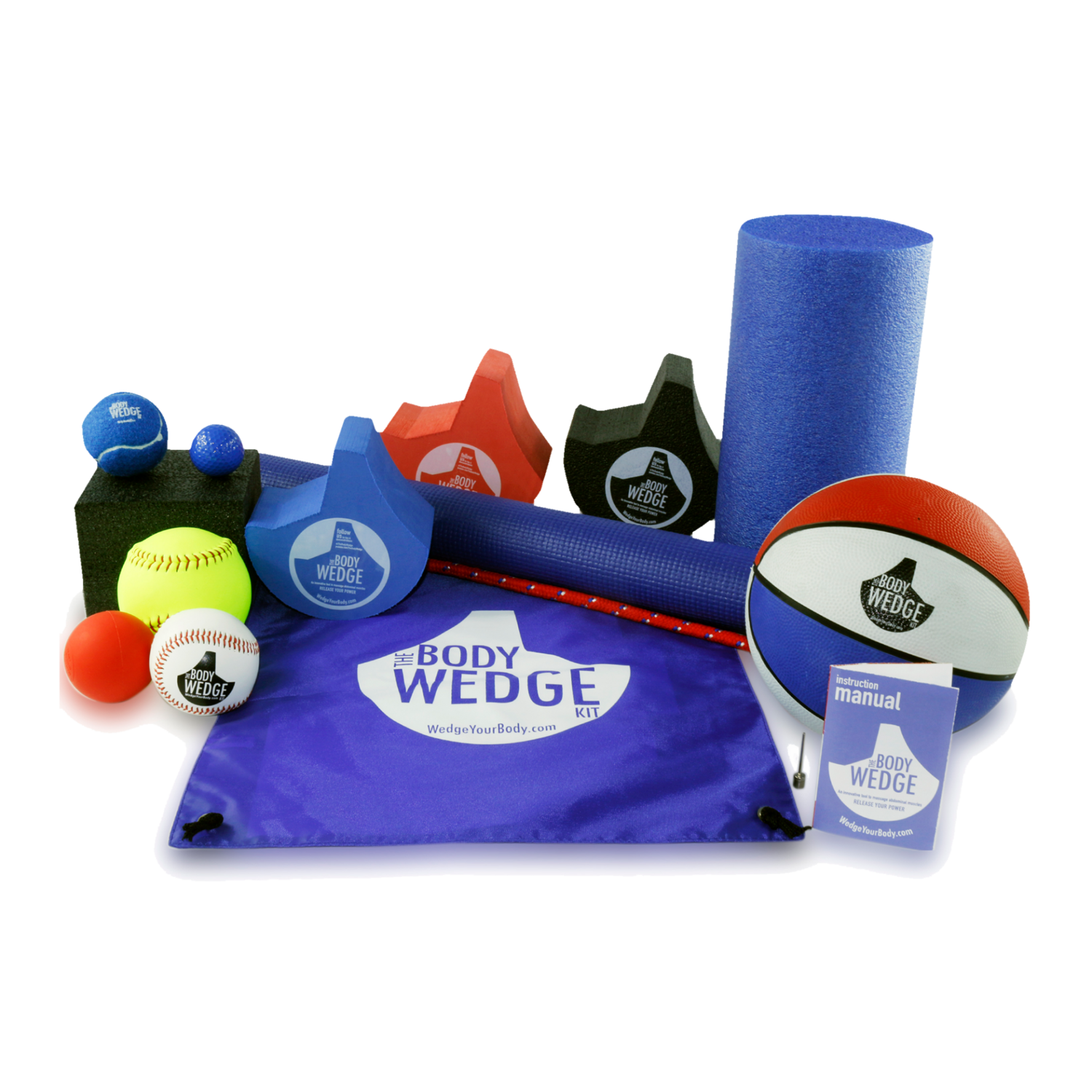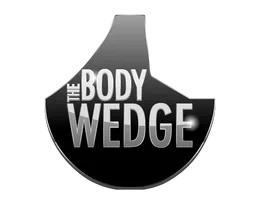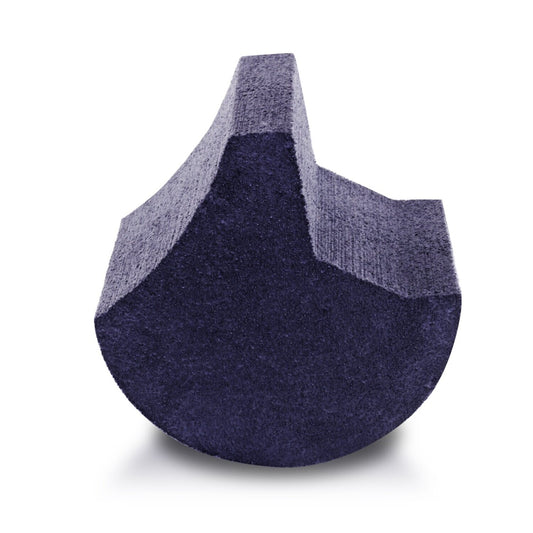NTRODUCING THE BODY WEDGE
THE BODY WEDGE
WHY CHOOSE THE
BODY WEDGE?
GET RELIEF FROM BACK & HIP PAIN BY MASSAGING THE PSOAS.
The Body Wedge is the 1st and newest self-massage tool on the market for therapy of the psoas which will give your back and hip pain relief. Its patented design mimics the hand of a massage therapist and also targets deep abdominal muscles such as your psoas and quadratus lumborum.
Trigger points or ‘muscle knots’ are sensitive spots in muscle fibers, fascia, ligaments, or tendons that have become weakened, overstretched, or inflamed due to muscular overload (overworking the muscle). There are many Symptoms that warrant trigger point release and several Factors that predispose a muscle to overload.
Using a self-applied Wedge technique to your muscles, you can begin to alleviate and prevent discomfort throughout your body. To start wedging at the core, the foundation of all movements, is the right choice.
THE REAL BENEFITS OF
USING THE BODY WEDGE
A unique device used to massage and release energy of the abdominal region, particularly the psoas.
-
Eliminate Pain
Most referred pain of the back and hips are due to the psoas needing some self-care, The Body Wedge can help.
-
Increase Range of Motion
Muscle tightness can greatly reduce everyday functional movements; release these muscles with daily TLC.
-
Reduces Headaches
Trigger point therapy improves blood flow and assist metabolic waste to be exchanged for oxygen and nutrients.
-
Lessen Depression
Massage therapy and the Body Wedge kit may help relieve the physical symptoms associated with depression.
-
Promote Skin Tissue Regeneration
Increase blood flow to bring oxygen and nutrients into tissues and organs will boost the body’s healing program.
-
Boost Workout Recovery
Pair text with an image to focus on your chosen product, collection, or blog post. Add details on availability, style, or even provide a review.

THE REAL BENEFITS OF USING THE BODY WEDGE
As the deepest muscle in our core, the psoas works with the hip flexors to pull the thigh and torso toward each other. Without it, we wouldn’t be able to get out of bed in the morning, and yet it’s one of the most overlooked muscle groups. As babies, we crawl to develop the psoas. Once the psoas is strong enough, we walk. This newly developed movement has no bounds. At some point, we stop moving so much and start to sit more. That sitting tends to become an everyday chore. Our careers impose it. Our family life invites it.
Effective and
Affordable
Psoas muscle relief shouldn’t be costly.
Crafted from high quality material,
our Body Wedge Kit is both inexpensive and cost effective.

EXPOSING THE UNDERLYING
CAUSES OF PAIN

The psoas muscle (pronounced SO-as) is the most important skeletal muscle in your body. Without this crucial group of muscles, you wouldn’t even be able to rise out of the bed in the morning! In fact, your psoas muscles are the primary connectors between your torso (above your hips) and your legs. "The psoas is the only muscle connecting the spine to the legs, so it serves as the sole link between the upper and lower extremities." Structurally, your psoas muscles are the deepest muscles in your core. Your psoas muscles are the muscles that flex your trunk forward and back, as if you're bending over to pick up something from the floor. The muscles of the psoas also stabilize your trunk and spine during upright standing movement or sitting. We first developed these muscle while crawling as babies.
What You Need to Know About your Psoas
The psoas muscles are made of both slow and fast twitching muscles. Because they are major flexors, weak psoas muscles can cause many of the surrounding muscles to compensate and become overused. That is why a tight or overstretched psoas muscle could be the cause of many or your aches and pains, including low back and pelvic pain. Since many experts don’t understand the complexity of the psoas muscles, it’s not uncommon for people to be given the wrong diagnoses and treatments for their psoas-related pain.
Your psoas muscles allow you to bend your hips and legs towards your chest, for example when you are going up stairs. They also help to move your leg forward when you walk or run. Your psoas muscles are the muscles that flex your trunk forward when bend over to pick up something from
the floor. They also stabilize your trunk and spine during ovement and sitting. The psoas muscles support your internal organs and work like hydraulic pumps allowing blood and lymph to be pushed in and out of your cells. Your psoas muscles are vital not only to your structural well-being, but also to your psychological well-being because of their connection to your breath.
By massaging the psoas and applying the right amount of time under tension, The Body Wedge acts to relieve discomforts and release tight or restrictive movements as the first line of defense to bring balance
back to your body.
SEE WHAT OUR CLIENTS SAY ABOUT THE BODY WEDGE
It's easy for us to tell you all of the greatness The Body Wedge provides, but we think the opinions of our customers count for a lot more. Check out what they had to say.
-
Too much sitting! I’d feel stiff and it hindered my training. I tried the wedge to get at the psoas to help release it. The design with the lip helps target the areas that are tight. How much you lean on it affects how deep it gets and the rocking motion helps you stay in the area, and get circulation going. I also like to use it on my side to help “floss” the muscles that get stuck sitting.
GREAT TO COMBAT PSOAS TIGHTNESS
COLLEEN L. -
The Body Wedge is a great tool to support my running, biking, and weightlifting. It is small, easy to use, and affordable. The instructions are easy to use and there are plenty of videos to see it in action. After using it regularly, I can see the benefits in my range of motion and flexibility. Put the top of the wedge in your belly button and the lip shows you where to put the lip to position it over your psoas. Easy!
GREAT TOOL FOR PSOAS THAT WORKS! STEVEN G. DEPOLO
-
A few months ago, I couldn't even spell "Psoas" let alone write a review on a product that can change your life. It wasn't until I started working out with a trainer that I began to understand the importance of flexibility in my life. After I started to use the Wedge, I noticed I was recovering quicker from workouts and didn't have nearly as many close calls with pulling muscles...
YOU HAVE TO TRY IT FOR YOURSELF! A. CASSARA
-
I bought this product to help release back pain from sitting at a computer all day and when it arrived I found it to be a very unique looking tool. Because of its uniqueness, I wasn’t sure how it worked but the manual and instructions provided made it easy to understand how to use it. After using it, I felt a release of tension in my lower back and strongly believe I have now found a solution...
GREAT TOOL - GREAT VALUE NICOLE
SEE OUR OTHER
GREAT PRODUCTS
Release your power with THE BODY WEDGE™ and then take it to the next level by checking out our other offers and great products.
-
The Body Wedge
Regular price $40.00Regular priceUnit price per -
The Body Wedge (2 of any size)
Regular price $75.00Regular priceUnit price per -

 Sold out
Sold outThe Body Wedge Kit
Regular price $90.00Regular priceUnit price per
HAVE A QUESTION
CHECK OUR FAQ
We know that sometimes you have questions. Below you’ll find a few of the most common ones we get, along with some answers.
Can you use two at the same time for each side?
No, It will be quite difficult to use two wedges at the same time due to the curved bottom of the Body Wedge.
Can the Body Wedge be used in areas other than the abdominal area?
Yes, there are a variety of uses for the Body Wedge that can be found on
this website and our other social media platforms. We will continue to
share users’ creative videos that demonstrate the usefulness of the
Wedge.
What if I want to massage other body parts?
You can check out our videos for information and tips for instructions
on massaging/releasing other parts of the body. You can also purchase
the Body Wedge Kit for more tools to use throughout the body.
What is the abdominal core?
Your core muscles are the muscles deep within the abdominals and back,
attaching to the spine or pelvis. Some of these muscles include the
psoas, transversus abdominis, the muscles of the pelvic floor, and the
oblique muscles. Your core is where your power is generated in order to
carry out any movement.
What is the quadratus lumborum muscle?
The quadratus lumborum (QL) is the deepest abdominal muscle. It’s
located in your lower back on either side of the lumbar spine. It starts
at your lowest rib and ends at the top of your pelvis. It’s common to
have pain here because you use this muscle to sit, stand, and walk.
Shouldn't I stretch my core muscles?
Performing stretching exercises that target the core muscles may
increase flexibility and enhance muscular function. Stretch slowly and
carefully to prevent muscle pulls or strains.
Why you should strengthen your core muscles?
Core exercises train the muscles in your pelvis, lower back, hips, and
abdomen to work in harmony. This leads to better balance and stability,
whether on the playing field or in daily activities. In fact, most
sports and other physical activities depend on stable core muscles.
How often can I use the Body Wedge?
You can use the Body Wedge morning, noon, and night when you are
experiencing mechanical dysfunctions in your movements. Remember to have
a balanced program of stretching and strengthening the core muscles.
Are there situations when I shouldn't Wedge my core?
YES. If ever in doubt, rule this method out until you have talked to a
trained medical professional. Abdominal surgery, pregnancy, and hernias
are definitely reasons to NOT use the Body Wedge.
What is the difference between abs and core?
While abs are only one muscle group, the core encompasses a large
percentage of all the torso muscles and beyond. Some specialists
consider core to be “everything except for arms and legs”. Some of them
include in the notion all layers of abdomen muscles, middle, and lower
back muscles, and glutes.
What about massaging the stomach?
Massaging the abdomen may help to relax your stomach muscles. That, in turn, helps stimulate digestion and relieve constipation.
What is the PSOAS muscle?
The psoas is a deep-seated core muscle connecting the lumbar vertebrae
to the femur. The psoas major is the biggest and strongest player in a
group of muscles called the hip flexors: together they contract to pull
the thigh and the torso toward each other.
What is trigger point?
A Trigger Point (TrP) is a hyperirritable spot, a palpable nodule in the
taut bands of the skeletal muscles’ fascia. Direct compression or
muscle contraction can elicit jump sign, local tenderness, local twitch
response and referred pain which usually responds with a pain pattern
distant from the spot.
What is trigger point therapy?
Trigger Point Pressure Release involves applying pressure with a finger
or other instrument to the trigger point and increasing the pressure as
the trigger point “releases” and softens. There are a number of
variations on this technique and a skilled practitioner will choose
which is right for each patient and muscle treated.
WATCH THE BODY WEDGE
IN ACTION
Check out The Body Wedge in use and discover for yourself how easy alleviating pain and improving your overall health can be.
-
Buy Now
GET THE BODY WEDGE KIT TODAY!
Self massage your entire BODY.
DROP US A
MESSAGE NOW
Have a question or concern?
Simply send us a message by filling out the form below and we will response as soon as possible.
- Choosing a selection results in a full page refresh.
- Opens in a new window.













